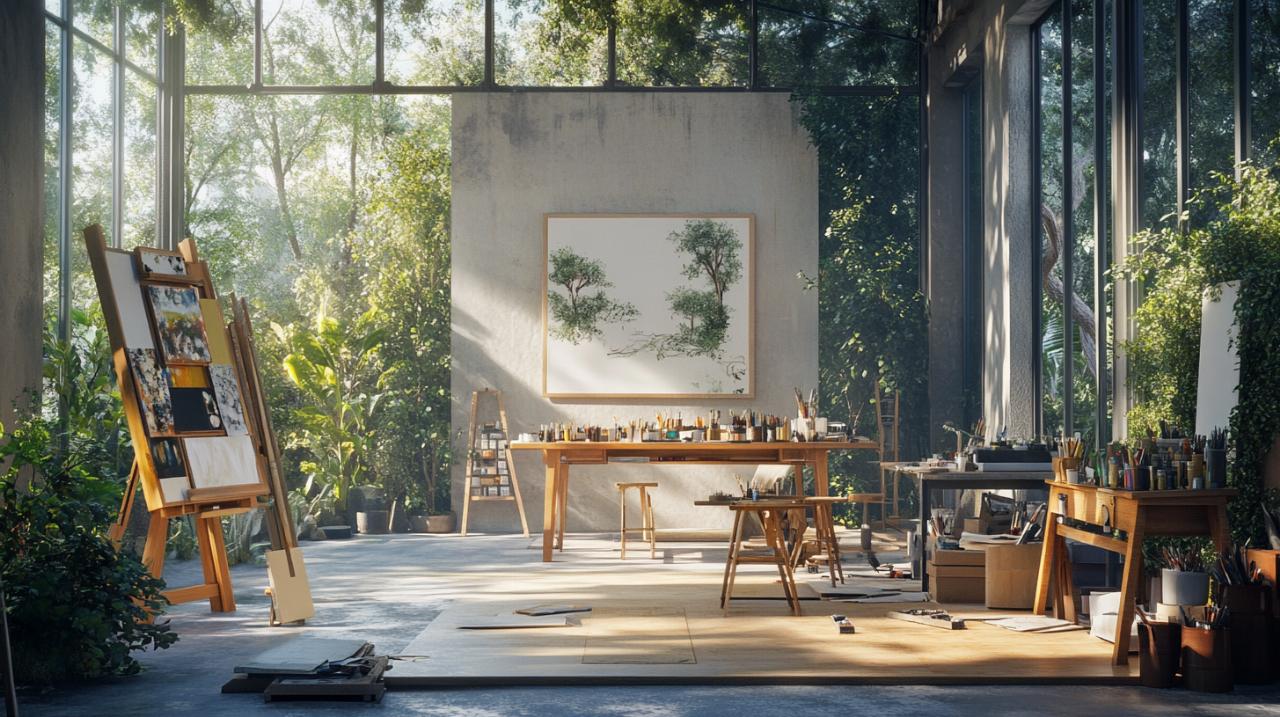Across London and beyond, artists and creatives are redefining their relationship with the environment, weaving eco-consciousness into every brushstroke, sculpture, and installation. This shift towards greener methods is not merely a trend but a profound transformation in how art is made, shared, and experienced. By adopting sustainable living practices, creatives are discovering that environmental responsibility can fuel innovation, deepen community bonds, and elevate their work to new heights of meaning and impact.
Embracing sustainable materials in your creative practice
The choice of materials forms the foundation of any artistic endeavour, and selecting those with minimal environmental impact has become a priority for many practitioners. Rather than relying on mass-produced supplies shipped from distant locations, artists are increasingly turning to local sources and recycled alternatives. This approach not only reduces carbon footprints but also injects unique character into each piece. Reclaimed materials carry their own histories and textures, adding layers of narrative that resonate with audiences on an emotional level.
Sourcing Locally and Recycling: A Green Approach to Art Supplies
Supporting local suppliers and seeking out second-hand resources creates a cycle of sustainability that benefits both the artist and the wider community. Markets, salvage yards, and community exchanges offer treasures that might otherwise end up in landfill. By choosing recycled paper, repurposed textiles, and salvaged wood, creatives demonstrate that quality and eco-responsibility are not mutually exclusive. This practice aligns with broader green initiatives gaining momentum in the capital and reflects a commitment to reducing waste at every stage of the creative process.
Foraging for Natural Pigments and Choosing Organic Canvases
The natural world provides a palette of colours waiting to be discovered. Foraging for berries, roots, and clays allows artists to craft pigments that are both vibrant and non-toxic. These natural paints eliminate harmful chemicals often found in conventional supplies, promoting safer studio environments and healthier ecosystems. Meanwhile, canvases made from organic cotton or linen sourced from responsibly managed forests ensure that the very surface of a work honours the planet. Such choices embody the principles of the Eco-Art movement, where every element of creation is considered through an environmental lens.
The Art of Upcycling: Transforming Waste into Masterpieces
Upcycling represents a creative challenge that turns limitation into opportunity. Unlike recycling, which breaks down materials for reuse, upcycling reimagines discarded objects as components of entirely new artworks. This practice not only diverts waste from landfills but also sparks inventive approaches to form and function. Across London, artists are proving that yesterday’s rubbish can become tomorrow’s statement piece, blending sustainability with striking visual impact.
Breathing New Life into Discarded Canvases and Materials
Old canvases need not gather dust in storage. By painting over previous works or incorporating worn surfaces into mixed-media compositions, artists honour the history embedded in these objects whilst creating something fresh. This method reduces the demand for virgin materials and celebrates the beauty of imperfection. Similarly, fabrics, papers, and packaging materials can be woven into collages or textile art, each piece telling a story of transformation and resilience.
Creating Sculptures and Installations from Scrap Resources
Large-scale installations constructed from scrap metal, plastic bottles, and electronic waste challenge viewers to reconsider their consumption habits. Iconic examples such as HA Schult’s ‘Trash People’ and Olafur Eliasson’s ‘Ice Watch’ have captivated global audiences, using art to spark conversations about climate change and conservation. These works demonstrate that environmental consciousness can coexist with bold, ambitious vision, turning everyday refuse into powerful symbols of ecological urgency.
Sustainable Transport for the London Creative
The way artists navigate their city influences their carbon footprint and their connection to the urban landscape. For those based in London, the capital’s extensive public transport network and growing cycling infrastructure offer eco-friendly alternatives to driving. Embracing these options not only cuts emissions but also immerses creatives in the rhythm and vitality of the metropolis, often sparking new ideas and unexpected encounters.

Navigating the Capital by Bike or Public Transport
Cycling through London’s streets offers a sense of freedom and immediacy that a car cannot match. It allows artists to weave through neighbourhoods, discovering hidden galleries, markets, and sources of inspiration along the way. Public transport, from the Tube to buses and overground trains, provides a shared space where diverse perspectives converge, enriching the cultural fabric that fuels creative work. Both modes reduce reliance on fossil fuels and align with broader sustainability goals embraced by organisations such as Creative Carbon Scotland and Arts Council England.
Cutting emissions whilst discovering london’s creative energy
Each journey becomes an opportunity to observe the city’s ever-changing character. Street art, pop-up exhibitions, and community projects reveal themselves to those who travel at a slower pace. This mindful approach to movement mirrors the ethos of sustainable living practices, where every choice is made with awareness of its broader impact. By reducing emissions and engaging more deeply with the environment, artists model a lifestyle that values both ecological health and creative exploration.
Building community through art swaps and workshops
Collaboration lies at the heart of a sustainable creative community. When artists share resources, knowledge, and space, they reduce waste and foster networks that strengthen collective resilience. Art swaps and workshops transform surplus materials into communal assets, ensuring that nothing goes unused and that everyone benefits from the exchange.
Sharing unused materials to foster collaboration
Many studios accumulate supplies that no longer serve their original purpose. Organising swaps allows these materials to find new homes and new uses, extending their lifecycle and sparking unexpected creative partnerships. This practice echoes the ethos of organisations such as the Sustainable Arts Foundation and the Green Art Lab Alliance, which champion shared resources and mutual support. By participating in these exchanges, artists contribute to a circular economy where value is continually regenerated rather than discarded.
Strengthening creative networks and reducing waste together
Workshops provide spaces for learning and experimentation, where techniques for using eco-friendly pigments, upcycled materials, and digital tools are passed from peer to peer. These gatherings build bonds that transcend individual practice, creating a web of collaboration that amplifies impact. Whether held in community centres, public parks, or shared studios, such events demonstrate that sustainability is not a solitary pursuit but a collective endeavour that thrives on connection and generosity.
Raising awareness: collaborative projects on environmental issues
Art possesses a unique power to communicate complex ideas and evoke emotional responses. When directed towards environmental themes, it can illuminate the urgency of climate change, celebrate biodiversity, and inspire action. Collaborative projects that weave together artistic vision and ecological data offer audiences new ways to understand and engage with the world around them.
Using art to spark conversations about sustainability
Visual narratives that integrate climate data, ecological loss, and human stories invite viewers to see beyond statistics and abstractions. Artists such as Zaria Forman, whose hyper-realistic drawings depict melting ice, and Xavier Cortada, known for his work on rising sea levels, transform scientific information into visceral experiences. These works bridge the gap between knowledge and emotion, making sustainability tangible and urgent. In London, initiatives by organisations such as Invisible Dust commission projects that address air pollution and other environmental challenges, bringing these issues into public view through creative interventions.
Engaging the public through creative environmental campaigns
Interactive installations, community murals, and performance pieces invite participation and dialogue. By collaborating with schools, local councils, and environmental groups, artists extend their reach beyond galleries and into everyday spaces. Projects that involve the public in activities such as creating art from collected litter or planting community gardens blur the line between audience and creator, fostering a sense of shared responsibility. These campaigns demonstrate that sustainable living practices are accessible to all and that collective action, guided by creativity, can drive meaningful change. The work of groups such as Deveron Projects and Arts Catalyst exemplifies how art can serve as a catalyst for research, discussion, and transformation, embedding environmental awareness into the fabric of community life.

